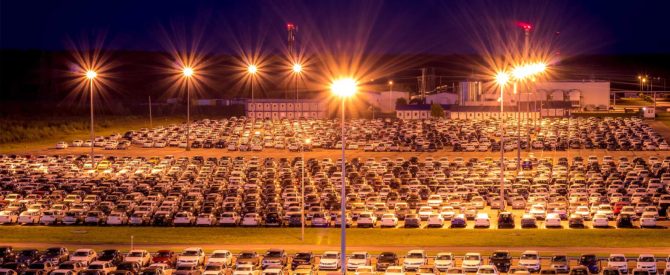Russian’s vehicle market is enduring a difficult period, with steep sales declines projected for 2020 as a quarantine intended to contain Covid-19 devastates businesses, forces millions out of labor and depresses consumer spending.
This situation has led many companies to file for bankruptcy and sell their relatively new corporate vehicle fleets in the used car market, according to a consultancy.
Russian Automotive Market Research, a Moscow-based consultancy in the automotive sector, attributed its latest forecast for the market to the length of the current nationwide stay-at-home order imposed by authorities. RAMR shared its forecast with Lube Report last week.
The consultancy laid out a range of impacts based on different lengths of quarantines – a short term ending by mid-May, a medium term by the end of May and a long term by the end of June.
A medium-term quarantine would cause new passenger car sales in Russia to drop 39 percent, from almost 1.6 million units in 2019 to 979,000 units this year, the firm estimated, adding that sales would then rise 12 percent to 1.1 million units in 2021. A shorter quarantine would cause a 31 percent decline to 1.1 million new car sales in 2020 and then a 9 percent increase to 1.2 million in 2021, the company predicted, while a longer one would cause a steeper drop of almost 50 percent to 808,000 units sold in 2020 and then a 10 percent increase to 892,000 cars sold in 2021.
RAMR’s middle scenario for new light commercial vehicle sales in Russia projects a 44 percent drop in sales from almost 119,000 units sold in 2019 to 67,000 units in 2021. A shorter quarantine would lead to sales of 75,000 units in 2020, a 37 percent decline, and then a 12 percent rebound to 84,000 light commercial vehicles sold in 2021. A longer one would cause a 49 percent drop to 60,400 units sold in 2020, and then a 9 percent upswing to 66,000 cars sold in 2021.
The consultancy’s middle scenario for new heavy-duty vehicle sales projects a 35 percent drop from 80,000 units sold in 2019 to 52,000 units sold in 2021. It predicts that a shorter quarantine would lead to a 33 percent drop to 53,600 units in 2020, and then a 12 percent increase to 60,000 units sold in 2021, while a longer one would cause a 44 percent drop to 45,000 units sold in 2020 and then a 13 percent increase to 51,000 heavy duty vehicles sold in 2021.
For this forecast, the consultancy considered variations of the Urals benchmark oil price, the value of the national currency, prospects of the country’s gross domestic product and the halt in production at car and car part plants in Russia and abroad. The country’s gross domestic product may drop up to six percent in 2020, the Russian Central bank said in a statement last Friday.
In its forecast, RAMR also took into account such factors as state subsidies for automotive manufacturers and car dealers because of closings, an expected unemployment surge, reduced consumer spending, credit burdens of the general population and companies, and new car price increases stemming from the ruble devaluation and other factors.
“We consider two basic outlooks. As a result of the epidemiological and economic situation in the country, the current market drop could end during 2020, while the year after is marked with a gradual economic rebound on the heels of increased oil prices, stronger ruble and resumed business activities,” Tatyana Arbadji, head of RAMR, told Lube Report.
On the flip side, the consultancy believes an extended coronavirus impact in the country beyond June 2020 would result in a grim outlook, with very slow economic recovery well into 2021. The car market could suffer from low consumer spending throughout 2020.
“Because of the inability of companies to pay off their vehicle credit programs, they might start selling their relatively new cars,” Arbadji said. “Meanwhile, small or medium-sized entrepreneurs and citizens may start buying relatively new cars on sale in the used car market, instead of buying more expensive new cars.
The 2021 projections under the various scenarios are technically up from 2020, so maybe let’s play up the 2020 projections instead.

New cars parked at a Volkswagen automobile factory’s distribution center in Kaluga, Russia.
